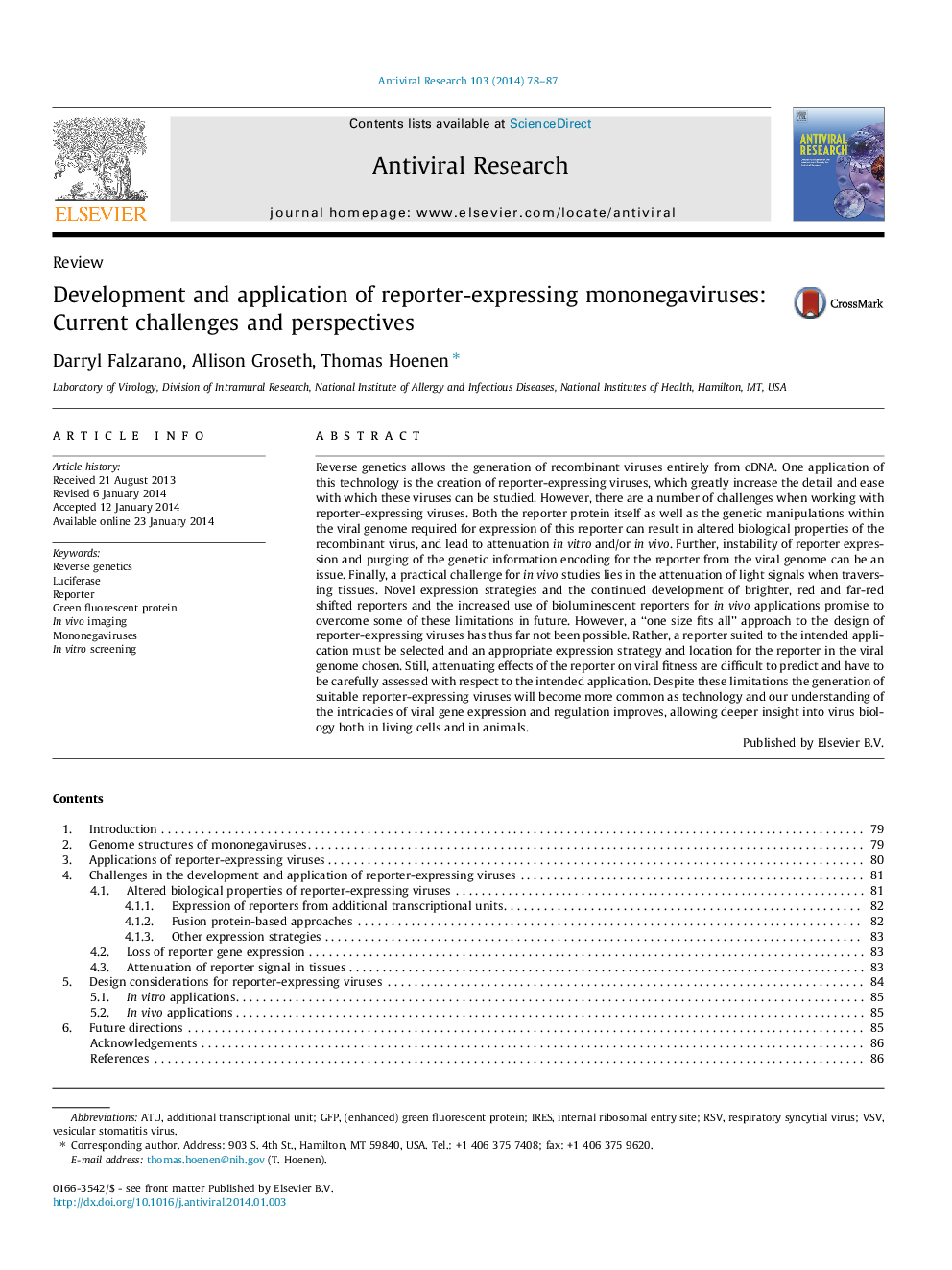| کد مقاله | کد نشریه | سال انتشار | مقاله انگلیسی | نسخه تمام متن |
|---|---|---|---|---|
| 2509976 | 1557840 | 2014 | 10 صفحه PDF | دانلود رایگان |
• Reporter-expressing viruses have numerous applications both in vitro and in vivo.
• The major design considerations are the choice of reporter and expression strategy.
• Technical aspects and attenuation determine the suitability of these viruses.
• These viruses should be specifically designed for each scientific application.
Reverse genetics allows the generation of recombinant viruses entirely from cDNA. One application of this technology is the creation of reporter-expressing viruses, which greatly increase the detail and ease with which these viruses can be studied. However, there are a number of challenges when working with reporter-expressing viruses. Both the reporter protein itself as well as the genetic manipulations within the viral genome required for expression of this reporter can result in altered biological properties of the recombinant virus, and lead to attenuation in vitro and/or in vivo. Further, instability of reporter expression and purging of the genetic information encoding for the reporter from the viral genome can be an issue. Finally, a practical challenge for in vivo studies lies in the attenuation of light signals when traversing tissues. Novel expression strategies and the continued development of brighter, red and far-red shifted reporters and the increased use of bioluminescent reporters for in vivo applications promise to overcome some of these limitations in future. However, a “one size fits all” approach to the design of reporter-expressing viruses has thus far not been possible. Rather, a reporter suited to the intended application must be selected and an appropriate expression strategy and location for the reporter in the viral genome chosen. Still, attenuating effects of the reporter on viral fitness are difficult to predict and have to be carefully assessed with respect to the intended application. Despite these limitations the generation of suitable reporter-expressing viruses will become more common as technology and our understanding of the intricacies of viral gene expression and regulation improves, allowing deeper insight into virus biology both in living cells and in animals.
Journal: Antiviral Research - Volume 103, March 2014, Pages 78–87
